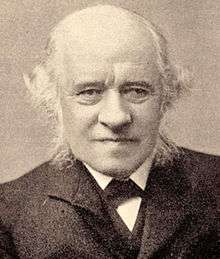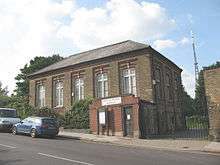Crystal Palace School


Crystal Palace School of Art, Science, and Literature, which opened in 1854, was set up by the Crystal Palace Company as a new enterprise to occupy part of its buildings when it re-erected the Crystal Palace in suburban Sydenham in 1853. Civil engineer and later first director of the Royal College of Music, George Grove was appointed secretary. It was a part of the great movements for educational and social reform of the nineteenth century.
The main buildings were destroyed by fire in 1936.
Ladies' Division

The overwhelming majority of classes were for women:[1]
- Music
- later Crystal Palace School of Music 1880
- Arthur Sullivan taught piano and singing and was a Professor of Theory, Harmony and Transposition part-time at the school in the 1860s and through the 1870s.[2]
- Art - water colours, sketching, figure drawing and modelling, painting in oils
- later Crystal Palace School of Art
- English language and literature
- Literature of other nations especially French, German and Italian
- History - English, European and Biblical
- Sciences - zoology, botany, chemistry, physical geography, maths and arithmetic
- Woodcarving
- Dressmaking
- Cookery
Notable staff
- Sir August Friedrich Manns
- Edward Milner
- Ebenezer Prout
- Constantinos Boufardeas
Notable music students
Notable art students
Notable literature students
Notable speech and drama students
Gentlemen's Division

Anerley Hill, Crystal Palace, London SE19. The South Tower base is just to the left

Classes for gentlemen were limited to the School of Engineering[1]
- later Crystal Palace School of Engineering 1872. The South Tower was demolished in the early 1940s[3] but a surviving part of the School of Engineering's premises is now the Crystal Palace Museum.[1]
Notable engineering students
- William Beckett
- William Warwick Buckland
- Joseph Day
- George Furness
- Charles Grey
- Geoffrey de Havilland
- Reginald Walter Maudslay
- H.F.S. Morgan
- David McKee Wright
The South Tower also contained John Logie Baird's transmitter and studios.
Letter to The Editor, The Times, Monday Dec. 07, 1936. page 10, issue 47551
The end of the Crystal Palace brings to mind memories of the School of Engineering which was housed in the South Tower, fortunately still standing firm as a rock. This school, founded by J W Wilson, M.I.M.E., an engineer who helped to build the Great Exhibition of 1851, sent many of its students to the four quarters of the globe. The curriculum of the school included mechanical and civil courses and about five of the circular rooms were used. There was a fitting shop, pattern shop, and drawing office. Those in the mechanical section built a 4 h.p. vertical engine which was generally exhibited at the head of the stairs on the south side of the Palace. In the Civil Engineering section we surveyed the whole of the grounds, and drew plans and made estimates for an imaginary railway which extended from one side to the other. This entailed all the necessary estimates for embankments, a cantilever bridge etc. Then there was the Colonial section presided over by a most congenial superintendent, who had no doubt seen much of a pioneer's life and infused his enthusiasm into those who belonged to his section. Concerning the rigidity of the South Tower, I was working in a high storey soon after joining the school when there was a strong wind, and, feeling giddy, I mentioned it to the superintendent. He informed me that it rocked several inches at the top, which made it safer than absolute rigidity.–Mr F. C. Bell, 74, Berners Street, Ipswich.
Examinations
The school was a centre for the examinations of the Oxford and Cambridge syndicates[1]
See also
Notes
References
- Musgrave, Michael. The Musical Life of the Crystal Palace, Cambridge University Press, 1995, Cambridge, UK ISBN 0-52137562-2
Further reading
- Official General Guide to the Crystal Palace and Park by Samuel Phillips. Revised, with new Plans and Illustrations, and an Index of Principal Objects By F.K.J. Shenton.
- Crystal Palace Library, Crystal Palace, Sydenham. Price 1 shilling.